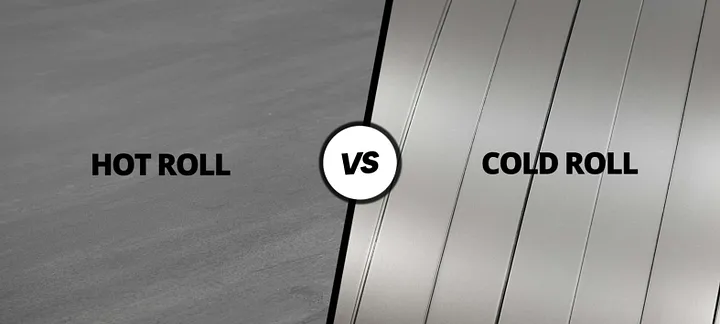Understanding the nuanced differences between hot-rolled and cold-rolled steel is crucial for your project. This blog will go beyond the common industry knowledge and delve into lesser-known aspects, offering unorthodox advice to help you make informed decisions.
1. Understanding the Process
- Hot-Rolled Steel: This steel is heated above its recrystallization temperature and rolled into shape while hot. This process makes it easier to shape but leaves a scaled surface.
- Cold-Rolled Steel: This steel is processed at room temperature after hot rolling. It involves additional steps like annealing and temper rolling, which refine its surface and improve its mechanical properties.
Uncommon Insight: Hot-rolled steel’s “scaled” surface can be an advantage in applications requiring additional coatings or linings, as the texture allows better adhesion than cold-rolled steel’s smooth finish.
2. Key Differences Beyond the Basics
- Tolerances: Cold-rolled steel offers tighter tolerances and a more consistent finish, making it ideal for projects where precision is key. However, hot-rolled steel’s broader tolerances can be beneficial in reducing production costs for less exacting applications.
- Edge Conditions: The edges of hot-rolled steel are rounded due to shrinkage, while cold-rolled steel maintains sharper edges.
Uncommon Insight: Rounded edges in hot-rolled steel can help reduce wear and tear on forming tools during further processing, especially in high-stress applications.
3. Applications:
- Hot-Rolled Steel Applications:
- Construction: Beams and joists where surface finish isn’t a priority.
- Automotive frames: Its malleability makes it perfect for parts requiring shaping.
Lesser-Known Use: Hot-rolled steel’s ductility makes it ideal for storage tanks in industries like agriculture and petroleum, where large volumes and minimal machining are priorities.
- Cold-Rolled Steel Applications:
- Home Appliances: Washing machines, refrigerators, and other consumer products.
- Furniture: Sleek, modern designs requiring smooth surfaces.
Uncommon Insight: Cold-rolled steel’s smoother finish is highly sought after for creating metal signage, especially those requiring intricate designs and high visual appeal.
4. Benefits:
- Hot-Rolled Steel:
- Affordability: Cost-effective for large-scale projects.
- Stress-Free Material: Internal stresses are minimized, reducing the risk of warping during fabrication.
Uncommon Insight: The affordability of hot-rolled steel makes it ideal for prototyping in heavy machinery industries, where multiple iterations are often needed.
- Cold-Rolled Steel:
- Aesthetic Appeal: Superior finish for visible components.
- Enhanced Strength: Increased hardness from work hardening during the rolling process.
Lesser-Known Tip: The improved strength of cold-rolled steel is advantageous for creating custom gears in precision equipment, offering durability and reliability.
Final Thoughts
Selecting the right steel type isn’t just about knowing the basic differences — it’s about leveraging their unique properties for optimal results. Whether you prioritize cost-efficiency, durability, or aesthetics, understanding these nuances ensures a smarter, more tailored choice for your project. By considering unorthodox insights and lesser-known applications, you can unlock new possibilities in your design and construction endeavors.

